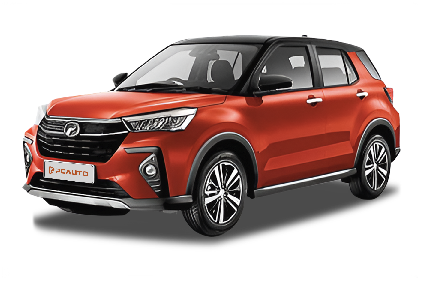Q
Is GR86 expensive to maintain?
The maintenance costs for the GR86 are relatively budget-friendly. For instance, if you drive 20,000 kilometers a year with service intervals every 5,000 kilometers, the cost of a minor service typically ranges between 899 and 1,000 Malaysian Ringgit. Over a total distance of 60,000 kilometers, the cumulative maintenance expenses amount to approximately 16,215 to 18,726 Malaysian Ringgit, translating to an average annual maintenance cost of around 5,405 to 6,242 Malaysian Ringgit.
In terms of fuel, the GR86 is equipped with a 2.4-liter naturally aspirated engine that runs on RON 95 petrol. According to the Ministry of Industry and Information Technology, the combined fuel consumption is 8.2 liters per 100 kilometers. Based on current fuel prices, the annual fuel expense is around 13,169 Malaysian Ringgit, which breaks down to approximately 0.66 Malaysian Ringgit per kilometer or about 1,097 Malaysian Ringgit per month.
Regarding insurance, which includes comprehensive commercial coverage, the cost is around 10,278 Malaysian Ringgit per year, equating to about 857 Malaysian Ringgit per month.
Taking into account insurance, maintenance, and fuel expenses, the total annual cost for the GR86 comes to approximately 29,689 Malaysian Ringgit, with an average monthly expenditure of about 2,474 Malaysian Ringgit. It’s important to note that maintenance costs may vary depending on the region and the dealership, so it's advisable to choose a reputable and well-reviewed service center for upkeep.
Special Disclaimer: This content is published by users and does not represent the views or position of PCauto.
Popular Models
Related Q&A
Q
How much does it cost to replace a clutch in a Toyota 86?
The cost to replace a clutch in a Toyota 86 can vary. Generally, clutch replacement involves the clutch three-piece set which includes the pressure plate, friction disc, and release bearing, along with labor costs.
For parts, the cost of the clutch three-piece set alone can range from around RM 500 to RM 1200 depending on whether you choose original parts or aftermarket ones. Original parts tend to be more expensive but offer better quality and compatibility.
Labor costs play a significant part too. Since replacing the clutch often requires removing the transmission, which is labor-intensive, labor fees could be anywhere from RM 500 to RM 1000 or more. This is because it's a complex job that needs skilled mechanics.
All in all, you can expect to pay between RM 1000 and RM 2000 or so to replace the clutch in a Toyota 86. But prices may differ among various repair shops, with 4S stores usually charging more due to their brand reputation and potentially higher-quality service, while independent garages might offer more competitive prices. Additionally, if there are other related components that need replacing or if the job faces unforeseen difficulties, the final cost could increase.
Q
How much fuel does a GR86 use per 100km?
Currently, there is no official information specifying the fuel consumption of the GR86 per 100 kilometers. Various factors, including model variations, driving habits, and road conditions, can significantly impact actual fuel efficiency. Previously, the older Toyota 86 had an official combined fuel consumption of 7.1 L/100 km for both the manual and automatic versions. The GR86, equipped with a 2.4L naturally aspirated flat-four engine, boasts improved power, which suggests that its fuel consumption may be slightly higher than its predecessor.
Some owners have reported real-world fuel consumption for the Toyota 86 averaging around 9 L/100 km, which is higher than typical family cars. For those seeking a more accurate estimate of the GR86's fuel efficiency, it is advisable to consult the vehicle’s user manual or reach out to a Toyota dealer, who can provide more detailed information.
Q
Does GR86 have a clutch?
The GR86 offers a manual variant equipped with a clutch, while the automatic version does not have a clutch. The manual variant features an MT (manual transmission), requiring the driver to press the clutch pedal to disconnect the power transfer between the engine and the transmission, enabling gear shifts. This clutch operation enhances the driving engagement.
In contrast, the automatic variant is equipped with an AT (automatic transmission), which shifts gears automatically based on parameters such as vehicle speed and engine RPM, eliminating the need for the driver to manually operate a clutch for shifting. The clutch pedal travel in the GR86 manual variant is relatively short, allowing the driver to engage the clutch from a lower seating position with minimal effort. This design makes gear shifting easier and provides a distinct driving experience for enthusiasts.
Q
What is the maintenance cost of a GR86?
The maintenance costs for the GR86 can vary widely due to several factors, including the type of service required, the parts needed, and the repair shop you choose. For routine maintenance tasks such as oil changes, filter replacements, and inspections, costs typically range in the hundreds of ringgits. However, if there are issues that require repairs or component replacements, expenses can increase significantly.
For example, replacing the clutch— a common maintenance task in manual transmission models like the GR86— can involve notable costs. The price for a clutch replacement kit, which includes the pressure plate, friction disc, and release bearing, along with labor charges, might range from about 800 ringgits to 2000 ringgits or more. Replacing brake pads on each axle could cost you a few hundred ringgits, while tire replacement costs depend on the brand and model of tires you choose; high-performance tires may run anywhere from 500 ringgits to 1500 ringgits or more.
To get a more accurate estimate of your GR86's maintenance costs, it’s best to consult an authorized Toyota service center or a reputable independent automotive repair shop. They can provide a detailed breakdown of costs based on your vehicle's specific needs.
Q
Is GR86 equipped with power steering?
Yes, the GR86 is equipped with a power steering system. Specifically, it features EPS (Electric Power Steering). In July 2024, both the GR86 and the BRZ received an upgrade to their EPS control as part of their updates, enhancing steering responsiveness.
This electric power steering system adjusts the level of assistance based on different driving conditions. For instance, at lower speeds, it provides increased assistance, making the vehicle easier to maneuver during parking or in tight spaces. At higher speeds, the assistance decreases, allowing for a more stable and precise steering experience, which helps improve safety and handling during high-speed driving. This design contributes to a more comfortable and precise driving experience for those behind the wheel of the GR86.
Q
How many miles can a fully fueled GR86 travel?
The fuel tank capacity of the GR86 is 50 liters. However, the actual mileage it can achieve will be influenced by various factors such as driving style, road conditions, and vehicle load. Taking the 2023 model as an example, it features a 2.4L naturally aspirated engine with a peak power RPM of 7000. While there isn't an official mileage figure provided, we can make a rough estimation based on common fuel consumption data.
Assuming the vehicle's combined fuel consumption is approximately 10L/100km, a full 50L tank would allow for a range of about 500km. Since 1 kilometer is roughly equal to 0.6214 miles, this translates to approximately 310.7 miles. However, this is merely an estimate. If driving habits are smooth and road conditions are favorable, the mileage could potentially be higher. Conversely, if the driving style is aggressive with frequent stops and starts, the mileage may decrease.
Q
Is the GR86 fuel-efficient?
The fuel efficiency of the GR86 depends on various factors. Equipped with a 2.4-liter naturally aspirated engine, the GR86's fuel consumption may not be as economical as some smaller or more fuel-efficient cars. It runs on gasoline and lacks specific fuel-saving technologies like those found in hybrid or electric options, which generally results in higher fuel consumption compared to economy vehicles.
Some owners may find the fuel consumption to be relatively reasonable during normal driving. However, if you frequently engage in aggressive driving—such as rapid acceleration or hard braking—fuel consumption will significantly increase. Additionally, driving in stop-and-go traffic on urban roads will lead to higher fuel consumption compared to cruising on stable-speed highways.
Overall, if fuel efficiency is your primary concern, the GR86 may not be the best choice, as it is more focused on performance and driving experience rather than maximum fuel economy. However, if you’re willing to sacrifice some fuel efficiency for the exhilarating sensation of driving a sports car, the GR86 promises to deliver immense driving enjoyment on the road.
Q
What is the lifespan of engine in Toyota 86?
The lifespan of the Toyota 86 engine is not fixed and can be influenced by various factors. With proper use and maintenance, engines in most Toyota models can easily exceed 300,000 kilometers without requiring a major overhaul, and the Toyota 86 engine is likely no exception.
To extend the lifespan of the Toyota 86 engine, it is essential to prioritize regular maintenance. This includes timely oil changes, replacing the oil filter, air filter, and using high-quality oil suitable for the vehicle. Developing good driving habits is also important; avoiding rapid acceleration, hard braking, and prolonged high RPM driving can minimize engine wear.
Be mindful of the vehicle's operating conditions and try to avoid driving in harsh environments to reduce potential engine damage. Strictly adhere to the manufacturer’s recommended maintenance schedule and tasks, such as regularly checking the engine's cooling system and fuel system to ensure they are functioning properly. Finally, using high-quality fuel is crucial, as poor-quality fuel can lead to carbon buildup in the engine, negatively impacting performance and longevity.
Q
Does GR86 need premium gas?
The GR86 uses petrol as its fuel type and does not explicitly require premium gasoline. However, high-performance engines generally have certain expectations when it comes to fuel quality. Premium gasoline, with its higher octane rating, is better able to resist knocking and provides a more stable combustion environment, which can help the engine achieve optimal performance.
If you're seeking ultimate power and performance, opting for premium gasoline might be a smart choice. However, for everyday driving, regular gasoline can adequately meet basic requirements. In summary, while the GR86 does not mandate the use of premium gasoline, drivers can decide based on their own driving needs and preferences.
Q
Is the Toyota GR86 considered a sports car?
Yes, the Toyota GR86 is considered a sports car. It features a rear-wheel-drive layout, which is a common characteristic of sports cars, as this configuration provides better handling balance and driving dynamics. The GR86 is equipped with a powerful 2.4-liter naturally aspirated engine that produces a maximum output of 237 horsepower, delivering ample power for rapid acceleration and an exhilarating driving experience.
The design of the vehicle also reflects typical sports car traits. It boasts a low, sleek body and pronounced fender flares that not only give it an aggressive look but also enhance its aerodynamics and stability at high speeds. Inside, the GR86 is fitted with sport seats that offer excellent support during spirited driving. The interior is also equipped with modern conveniences and a user-friendly infotainment system.
On the suspension and braking front, the GR86 has been meticulously engineered to perform exceptionally well on both the road and the track. It features MacPherson strut independent suspension at the front and is equipped with a precise electronic parking brake system, ensuring responsive handling and reliable stopping power. All these elements combined firmly establish the Toyota GR86 as a true sports car.
Popular Cars
Model Year
Car Compare
Car Photo
Latest Q&A
Q
Does the 2019 Golf GTI have a timing belt or chain?
The 2019 Golf GTI uses a timing chain instead of a timing belt—a design that offers better durability and lower maintenance costs. Typically, a chain lasts as long as the engine itself and rarely needs replacement, whereas a belt requires inspection or replacement every 60,000 to 100,000 km. If neglected, a worn belt can snap and cause severe engine damage.
VW’s EA888 engine family has long relied on chain-driven systems, which are relatively quiet and highly reliable. That said, it’s crucial to periodically check the tensioner’s condition. Some earlier models experienced timing issues due to tensioner design flaws, but this was addressed in the 2019 version.
For performance enthusiasts, a chain system handles high-revving stress better, making it a common choice for hot hatches like the GTI. For daily driving, just stick to VW 50400/50700-spec oil as recommended in the manual—proper lubrication keeps the chain system healthy long-term.
One heads-up: If you hear noticeable metallic rattling near the front of the engine, have the guides or tensioner inspected ASAP. Unlike the telltale belt squeal before failure, this noise is a classic sign of chain-related wear.
Q
What is the recall on the 2019 GTI?
The 2019 Volkswagen Golf GTI was subject to a safety recall addressing two potential issues. First, the fuel pump control unit software could malfunction, potentially causing engine stalling in rare cases. Second, some vehicles might have rear suspension stabilizer link bolts that weren't tightened to specification, posing a loosening risk. Owners can visit authorized dealers for free software updates or bolt retightening.
These proactive recalls demonstrate Volkswagen's commitment to safety. Dealers often handle outstanding recall items during routine maintenance.
For performance-oriented models like the GTI, it's wise to go beyond recall checks. Pay close attention to the turbo system, DSG transmission fluid, and brake wear—these components endure more stress during spirited driving. If warning lights appear or you notice unusual noises, get a professional inspection promptly. Keeping the car in top shape ensures you can fully enjoy its dynamic capabilities.
Q
Does the 2019 GTI require premium gas?
The 2019 GTI does recommend using high-octane fuel (typically RON 95 or above). Its 2.0L turbocharged engine has a relatively high compression ratio, and premium gas ensures optimal performance while reducing knock risk. It also helps maintain engine cleanliness and long-term reliability.
While the car may tolerate lower-octane fuel (like RON 92), you’d see slightly reduced power output and fuel efficiency. Over time, it could also affect engine longevity. Turbocharged engines are particularly sensitive to octane ratings since turbos generate higher heat and pressure—high-octane fuel handles these conditions better.
Mixing different fuel grades occasionally won’t hurt, but sticking to the manufacturer’s recommendation is ideal. Also, periodic fuel additive treatments can help clean carbon buildup, especially for direct-injection engines.
One more thing: even with the same octane rating, fuel additive packages vary by brand. So, picking a reputable gas station matters too.
Q
How long will a 2019 GTI last?
The lifespan of a 2019 GTI largely depends on maintenance and driving habits. With regular oil changes, transmission fluid replacements, and avoiding aggressive driving, it can easily clock over 200,000 kilometers—or even more. Its 2.0T engine and DSG gearbox are proven combos, and as long as you stick to the factory service schedule, mechanical reliability won’t be an issue.
Just keep in mind: turbocharged engines demand extra care. Always use the right spec full-synthetic oil and monitor the cooling system. Climate plays a role too—hot, humid conditions mean paying extra attention to rubber seals and electronics. Every 50,000 km, have the timing chain and high-pressure fuel pump inspected (key items for turbos).
Driving style matters. Don’t redline it constantly, and let the engine warm up properly after cold starts. Rustproofing helps long-term durability, so regular underbody washes are smart. Nail these details, and this car’s built to last.
Q
How fast is the 2019 GTI?
The 2019 GTI truly delivers when it comes to performance. Under the hood lies a punchy 2.0-liter turbocharged four-cylinder, churning out 228 horsepower and 350 Nm of torque. Whether you opt for the engaging 6-speed manual or the lightning-fast 7-speed DSG, this hot hatch rockets from 0-100 km/h in just 6.3 seconds, with an electronically limited top speed of 250 km/h.
What really sets the GTI apart is its razor-sharp handling. The sport-tuned suspension and electronic differential lock work together to deliver precise steering and rock-solid cornering stability. It’s the perfect blend of everyday practicality and proper driver’s car thrills—a well-rounded hot hatch in every sense.
For enthusiasts, the GTI’s tuning potential is massive. Many owners go for ECU remaps or intake/exhaust upgrades to squeeze out even more power. Just remember to keep things street-legal—safety and compliance should always come first. Around here, these pocket rockets have a solid following, and it’s easy to see why.
View MoreLatest News

Perodua collaborates with Magna Steyr to develop a new modular electric vehicle platform
AshleyDec 5, 2025

Rare big move, Toyota releases three sports cars: GR GT, GR GT3, Lexus LFA Concept
JamesDec 5, 2025

2026 Proton Saga MC3 launched has received 30,000 orders so far
Kevin WongDec 5, 2025

Perodua launches its first electric vehicle QV-E, offering battery ancestor spirit mode options
MichaelDec 4, 2025

Rare move, Toyota will release three important models in one go on December 5th
AshleyDec 4, 2025
View More




 Cars
Cars















